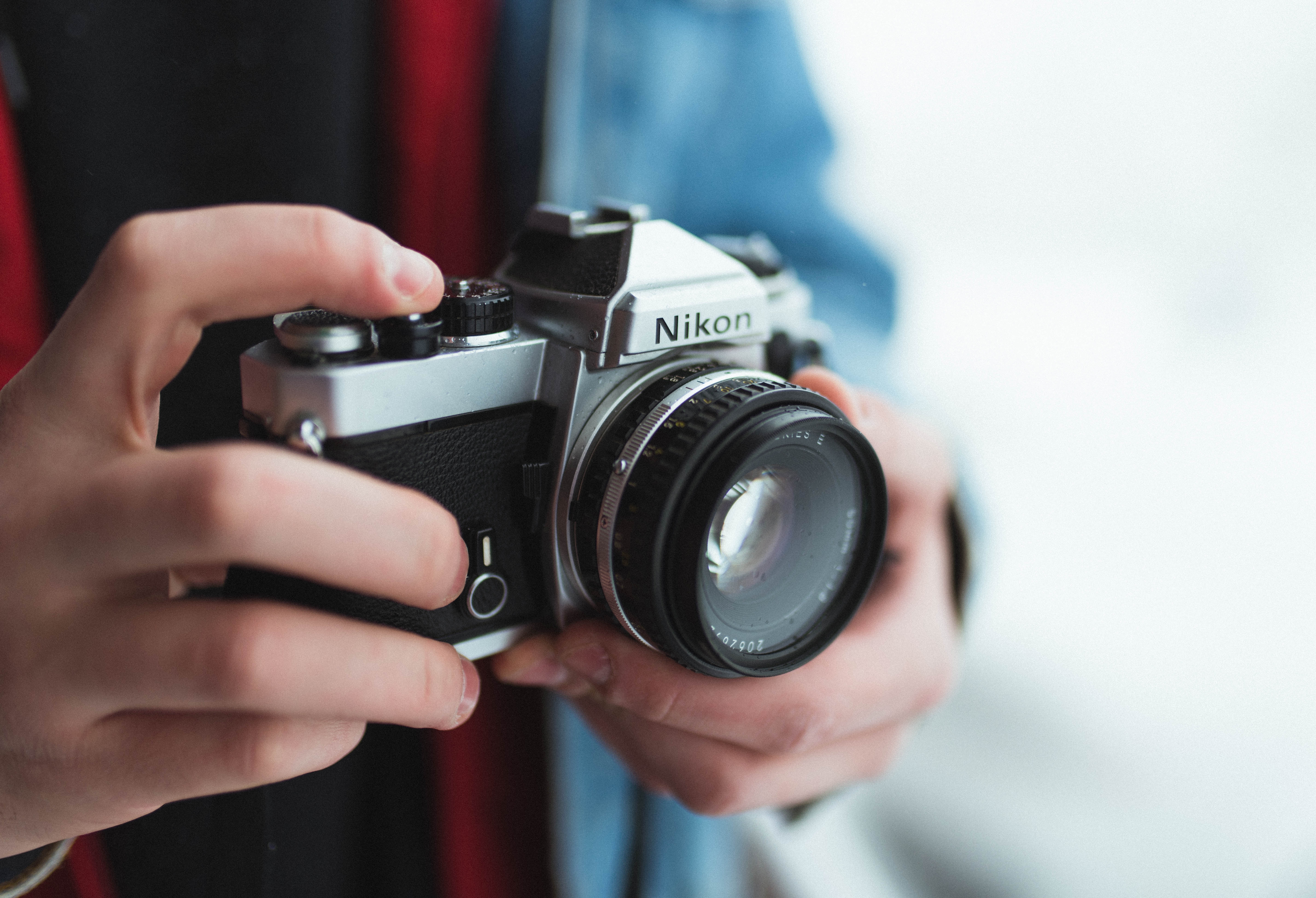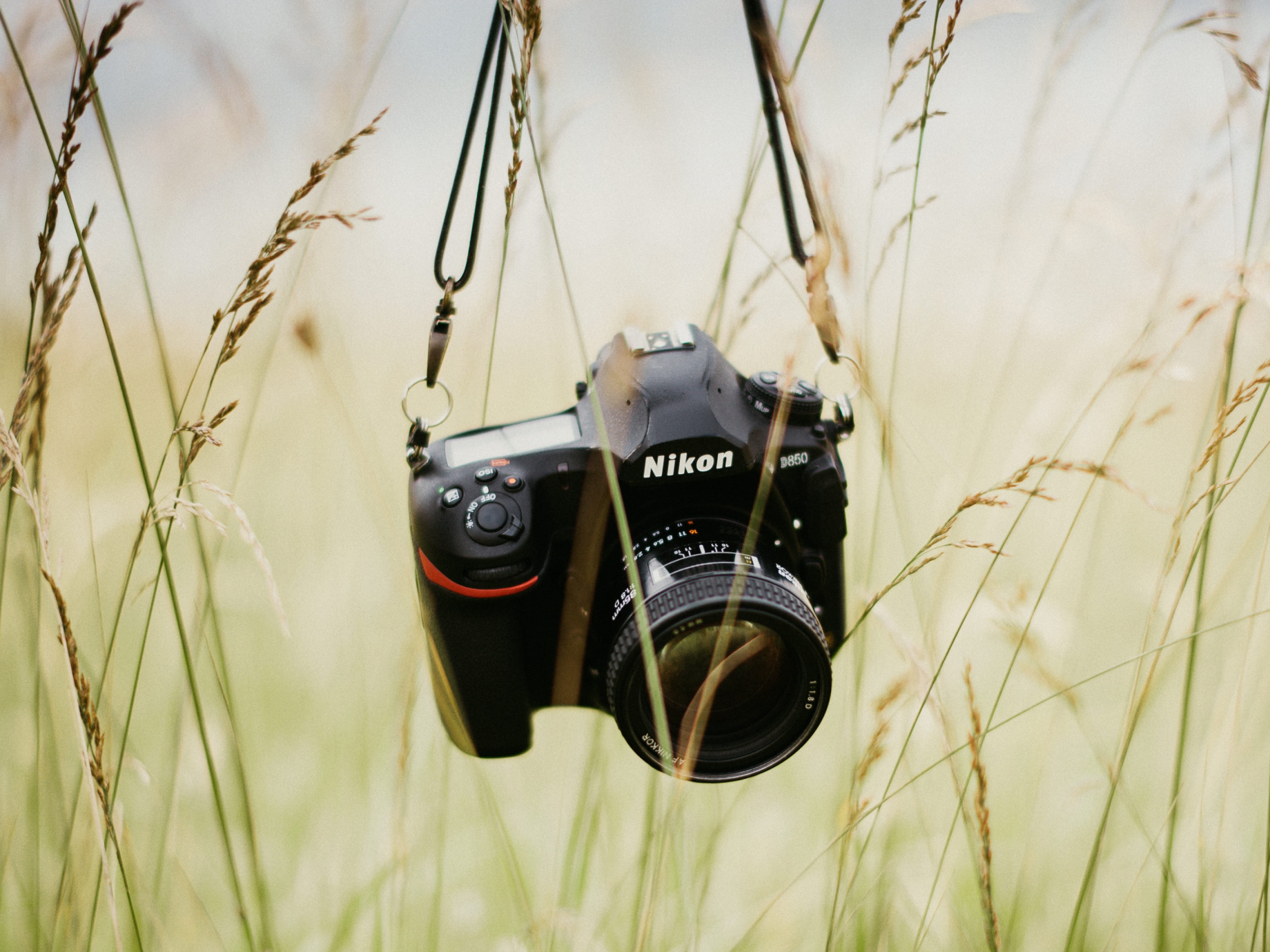
It used to be difficult to find a good point-and-shoot camera for street photography. Now, there are tons of good digital options on the used market, even if you go back a few years. There are cameras with a wide range of price points, versatility, and form factors available—often for fractions of what they used to cost. So, if you’ve been thinking about snapping up a new snapshooter for yourself, you’re in luck!
Below are my top ten choices for street photography digital cameras. I even split them up by form factor for you. And, as always, I shared some of my own high-resolution street photos, so you can get a sense of what’s possible with each camera. Enjoy!
COMPACT CAMERAS
If you want a discreet camera body that can fit into a pocket, and you don’t mind being limited to a single focal length, these three compacts take great images and are about as good as it gets for street photography.

Ricoh GR III
This might be my favorite camera on this list, and it’s no accident I’m starting with it—I just love the GR series of cameras so much. And this, the third edition of the APS-C sensor GRs, is arguably the best one yet. The size can’t be beat, it glides in almost any pocket—perhaps even a skinny jean. I wrote a review for it a few months back, so I won’t go into too much detail here, but let me just reiterate three things I love about it.
First off, the 18mm f/2.8 lens is ridiculously sharp and renders so much detail that you’ll be amazed the GR III only sports a 24-megapixel sensor. Second, the form factor is nearly perfect—all the buttons are in the right places and it handles beautifully. And finally, I love all the functions that Ricoh specifically added with street photographers in mind—the snap focus mode, the near-silent shutter, the quick start-up, and the fact that it’s designed to be used one-handed. If it had a built-in flash and an optical viewfinder, it’d be perfect, but I’m willing to overlook those factors, because it just performs so well. A new classic.
NEXT BEST THING: If you’re looking to save a few bucks, the original 16-megapixel Ricoh GR and GR II are really affordable right now. Plus, with those you get something that the GR III doesn’t have—a handy pop-up flash.
RICOH GR III SAMPLE PHOTOS:




Fujifilm X100V
Disclosure—I’ve only spent a limited time with the X100V, but having shot every iteration in the series, I can safely say that Fujifilm has nailed it with their fifth version. They’ve seemingly addressed every major gripe people had with the previous models, even though there weren’t that many things to complain about.
The V gets a brand-new lens design that manages to capture all the magic from the old glass while improving things like close-up sharpness and autofocus speed. The new 26-megapixel sensor and processor match the flagship X-T4 and X-Pro3 bodies, so you’re getting phenomenal performance in a compact, stylish design. Plus, it can now be weather-sealed simply by adding a filter to the front of the lens, making it a great street camera in the rain and snow.
NEXT BEST THING: Being that the X100V is the fifth in the series, that means that if you love the form factor, there are four older X100 cameras to choose from. The X100F is the best deal right now—it doesn’t feel quite as dated as earlier models, and it’s priced at half of what it cost brand new.
FUJIFILM X100F SAMPLE PHOTOS:




Leica Q2
This is another newer model that I’ve only spent limited time with, but I’ve put in dozens of hours on the street with the previous version, so the changes Leica made to the Q series really resonate. What you get with these luxury cameras is a gorgeous lens/sensor combination that is worth every penny—and you’ll need a tall stack of pennies to afford one. But, hear me out, you won’t regret your purchase for a moment once you get your hands on it.
The lens alone is worth the price of the whole camera, and Leica took full advantage of the amazing sharpness and resolution by marrying it with an impressive 47-megapixel full-frame sensor. That means that if you need to crop a shot from the wide 28mm lens to approximate something more like a 50mm, or even a 75mm, it’s totally doable. That makes the Q2 extremely versatile—perhaps the only camera you need on the street, for travel, or just life in general.
NEXT BEST THING: The original Leica Q is still a winner in my book, with most of the same features (and lens) as the Q2 at a way more affordable price-point. Also, if you’re into being extra stealthy on the street, look no further than the Leica Q-P with its ninja-like appearance.
LEICA Q SAMPLE PHOTOS:



INTERCHANGEABLE-LENS RANGEFINDER-STYLE CAMERAS
So, perhaps you don’t want to be locked down to a single focal length like in the compacts below. These interchangeable lens cameras feature the classic rangefinder form factor that’s been popular since Henri Cartier-Bresson hit the streets of Marseille with his Leica III in the early 1930’s.

Fujifilm X-Pro3
In my review of the X-Pro3 earlier this summer, I explained why this was a successful experiment with form factor for Fujifilm. Basically, the X-Pro3 gets as close to the experience of shooting film as you can get for a digital camera with all the modern bells and whistles.
The fact that you are purposely discouraged from using the back screen while in the act of shooting lets you concentrate on what matters most—being in the zone and not missing a moment. Having said that, this is still a digital camera, and you’ll never forget that while using it. And that’s a good thing.
The hybrid optical/electronic viewfinder is packed with so much information and functionality that you won’t miss that hidden back screen at all. Slap on the Fujinon 23mm f/2 or the 16mm f/2.8 and you’ll have a compact, light, and extremely capable kit for the street. And, man, those Fujifilm colors are to die for.
NEXT BEST THING: For those looking to save a pretty penny, the Fujifilm X-Pro2 is now really affordable and still very relevant. The graphite silver model is especially attractive.
FUJIFILM X-PRO3 SAMPLE PHOTOS:




Leica M10
The 24-megapixel full-frame sensor of this model offers plenty of resolution to showcase the precision of Leica glass. A new dial on the top plate makes it possible to no longer have to dive into menus to set the ISO on the fly. Match that with the simplified button layout on the back and you have a perfect tool for a pure shooting experience on the street. See, they got me saying it now.
NEXT BEST THING: The impeccable Leica M (Typ 240) is still a heck of a rangefinder for your collection of M-mount glass. And if you prefer to shoot black-and-white, look no further than the Leica M Monochrom (Typ 246), which shuns color altogether.
LEICA M10 SAMPLE PHOTOS:




Leica CL
When Leica announced the digital CL back in 2017, my ears perked up, being that I’m a big fan of the original film rangefinder made in conjunction with Minolta in the ’70s. I was curious to see how they would carry on that legacy. Even though it borrows styling from a Leica III more than the original CL, the digital CL didn’t disappoint when it comes to performance and handling. It sports a 24-megapixel APS-C cropped sensor, and takes L-mount lenses, which has a growing line-up thanks to Leica’s newly formed alliance with Panasonic and Sigma.
This means more affordable lenses are on their way, and there’s a great chance the mount will be here for the long run. I really enjoyed pairing the CL with the 18mm f/2.8 Elmarit—a pancake lens that is optically excellent and makes the kit stylish, discreet and very portable out in the street.
NEXT BEST THING: If you’re in need of a more affordable APS-C digital rangefinder, the Fujifilm X-E3 offers a similar form factor and performance, plus you get access to a full lineup of excellent X-mount glass.
LEICA CL SAMPLE PHOTOS:



INTERCHANGEABLE-LENS SLR-STYLE CAMERAS
If you’re like me, and you’re left-eye dominant, a rangefinder may not be ideal, as you’ll find yourself smearing your greasy nose on the LCD screen every time you take a shot, so perhaps you’d be better suited for a more traditional SLR-style camera. Here are four interchangeable-lens mirrorless gems for street photography.

Fujifilm X-T3
I know what you’re saying, “Isn’t the X-T4 the latest X-T Fuji?” And I hear you, but let me point out that the X-T4 is mainly a video-centric hybrid camera, which doesn’t necessarily give it a leg up over the X-T3 on the street. After all, they have basically the same exact specs when it comes to shooting stills—the only difference is that the X-T4 has a flippy screen which is good for vlogging, but not that useful for street photography. And when you take into consideration the low used price, the X-T3 might be the best deal in photography right now. You get monster performance in a tight, stylish package.
The autofocus speed is lightning fast and accurate, even in low-light situations. The ergonomics are perfect for those of us that come from film and love using mechanical dials over diving into menus. Most importantly, the image quality from the X-T3 is outstanding—it’s my go-to camera for when I feel like switching up lenses.
NEXT BEST THING: If you want something even smaller, but with most of the same features, look into the Fujifilm X-T30—it’s basically the X-T3’s little sibling. Still too much for your budget? Go back one more generation to the X-T20 and you’re getting a whole lot of camera for not much moola.
FUJIFILM X-T3 SAMPLE PHOTOS:




Nikon Z6
I reviewed the Nikon Z6 last year, and it may have been the camera I enjoyed using the most in 2019, and it’s even better a year later thanks to a few firmware updates. The Z line of Nikon mirrorless cameras got upstaged by new releases from Canon and Sony over the last couple of years, and yes, Nikon has been slower to release new lenses for the mount and make upgrades, but what they have released has been solid.
The Nikkor Z 24-70mm f/2.8 might be the best lens in the class for any mount, and all the Z-mount f/1.8 primes have been spectacular so far. What I enjoy the most about the Z6 is the ergonomics. It has the best grip out of any mirrorless camera I’ve ever used, and since I was already familiar with the button layout of Nikon DSLRs, using it on the street felt really natural. The firmware upgrades have put it in the same class as Sony cameras for eye detection AF. It’s been really impressive to see how much this camera has grown since its release. I’m also a big fan of Nikon colors.
NEXT BEST THING: If you want a baby Z6, the Nikon Z50 is an APS-C powerhouse with great autofocus performance, advanced video features and those great Nikon colors.
NIKON Z6 SAMPLE PHOTOS:




Canon EOS R
With the release of the Canon EOS R5 and R6, the original Canon EOS R is now officially underrated. Sure, it doesn’t have dual SD card slots or 8K video, but since when have those things been necessities? They certainly aren’t required for street photography, and that’s my point with this—the EOS R makes for a great stills camera. Heck, video is pretty good too, but let’s not get caught up in that.
The EOS R is basically a mirrorless version of the Canon EOS 5D Mk IV, which is one of the most widely used professional cameras in the world. This thing is beyond capable, it shines as a photographic tool. You get accurate and effortless autofocus, great metering, reliable performance, and a weather-sealed body that’s perfect for any condition you’re likely to run into on the street. The RF-mount line-up is filling out with some pretty groundbreaking lenses too, so the future is bright for this camera.
NEXT BEST THING: The Canon EOS RP is the most affordable full-frame mirrorless camera on the market right now, and it’s a barely scaled-down version of the EOS R.
CANON EOS R SAMPLE PHOTOS:




Sony a7 III
Finally, we come to the last camera on the list, the workhorse that is the Sony a7 III. This do-it-all, well-rounded mirrorless camera is a force to be reckoned with on the street—or anywhere, for that matter. It’s a very popular camera because of its versatility, whether you’re shooting stills or video. But for the purposes of this article, let’s focus on the photo aspect.
The stabilized 24-megapixel full-frame sensor has great latitude, with 15 stops of dynamic range. You can recover an amazing amount of detail out of the shadows and highlights, meaning you can save a severely underexposed shot, for example. It captures action with 10 frames per second of continuous shooting, and the autofocus system is one of the fastest on the market. I really enjoyed using the a7 III with the 35mm f/2.8 Zeiss Sonnar T* lens, which is really small and light, almost like a pancake lens.
NEXT BEST THING: If you still want access to all that Sony E-mount glass, but don’t mind a cropped sensor, the Sony a6500 is a top-performer for both stills and video, and it will handle itself just fine on the street.
SONY a7 III SAMPLE PHOTOS:



Get Started with Street Photography
Hopefully, there’s something just right for you on this list. We also encourage you to explore our full selection of used digital cameras for sale.
If you still have some questions, why not give us a call at 1-800-DIAL-KEH? One of our experts will help you find exactly what you need for your next street photography camera. And if you don’t like it, no worries! We’ve got you covered with a 14-day return period and a 180-day warranty. Thanks for reading.




